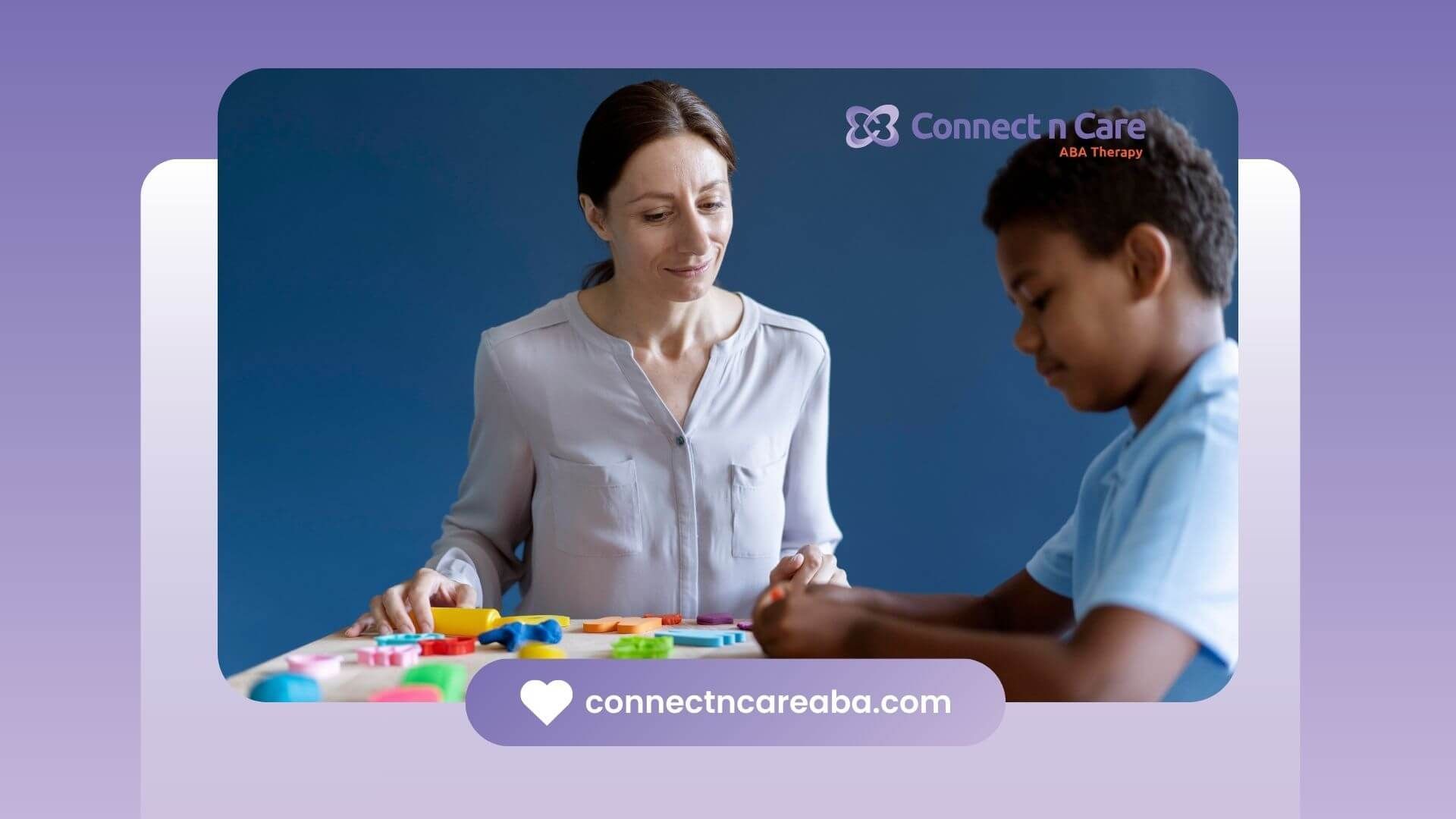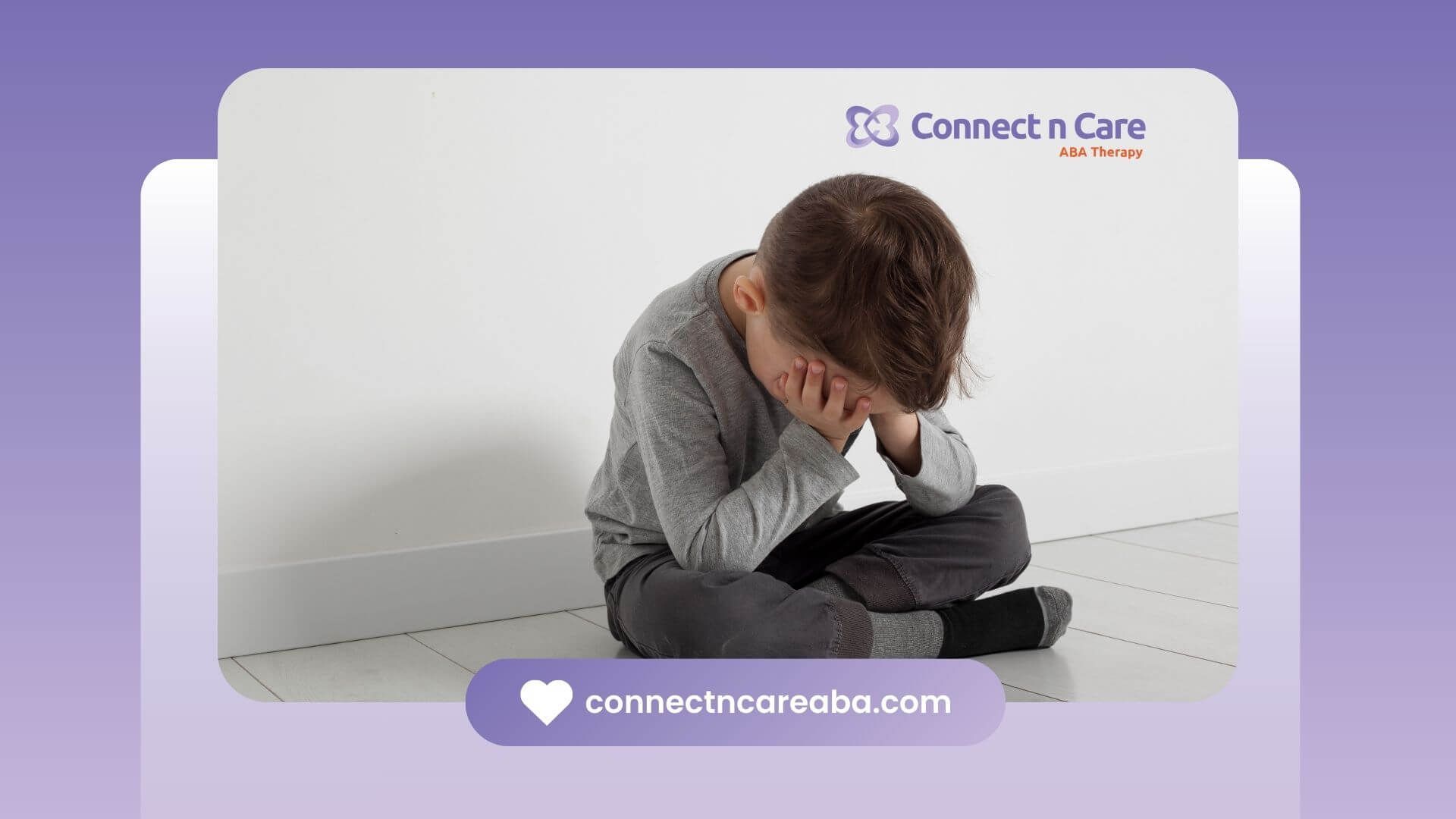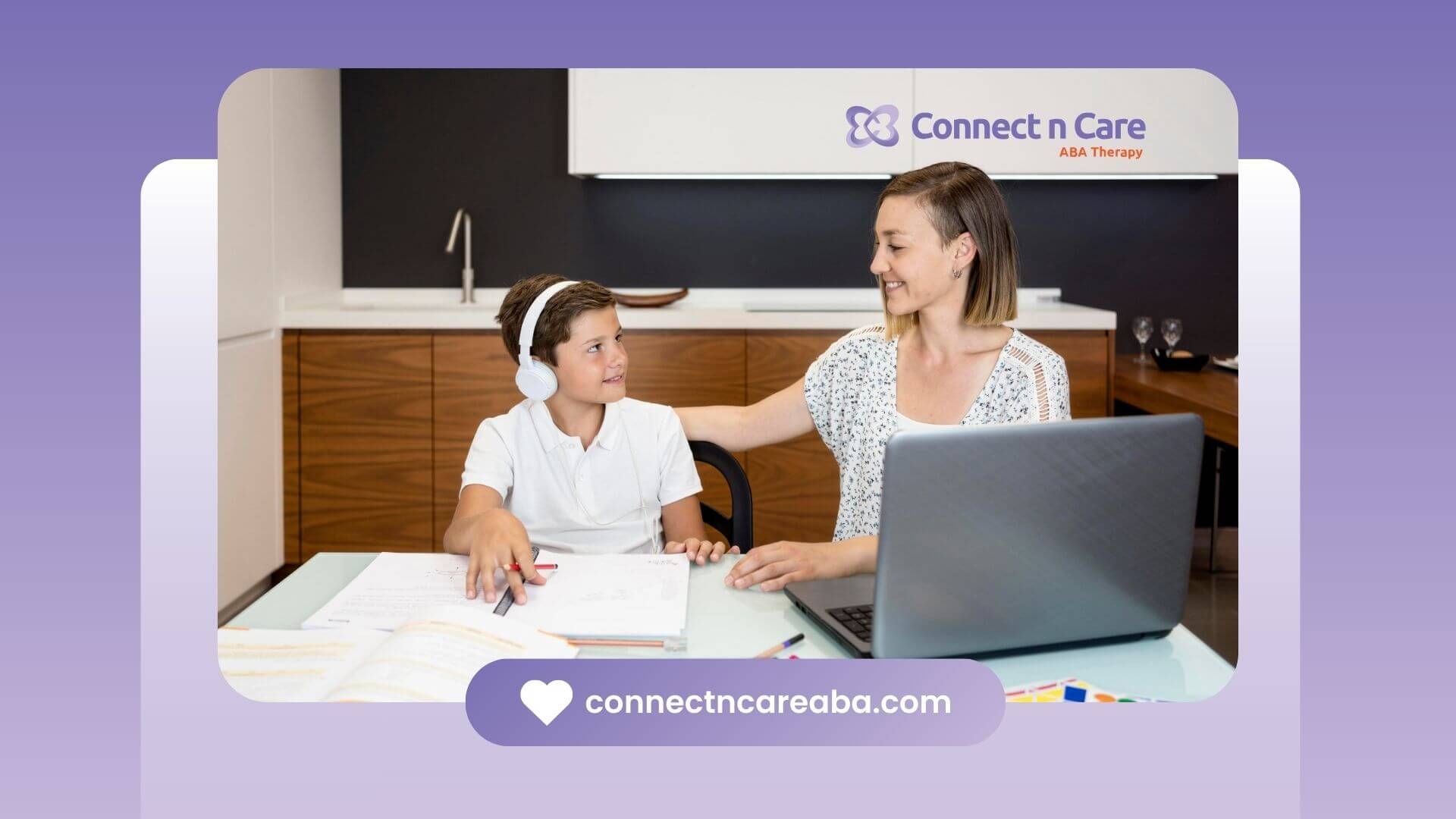Applied Behavior Analysis (ABA) therapy is one of the main ways to help children with autism spectrum disorder. It helps kids get better at talking with others, making friends, and handling their behavior. Many families starting out with aba therapy often ask, "How much time does it take to see changes?" There is not just one answer to this. How quickly a child grows during applied behavior analysis depends on the child and how the therapy is given. In this article, you get to find out what can change this, what the usual timeline looks like, and what most people should expect when their child begins behavior analysis. This should help you know more about what aba therapy can do for your child who may have autism spectrum.
Key Factors Influencing How Quickly ABA Works
The time it takes to see results from aba therapy is not the same for every child. Knowing the key factors that affect this can help you set realistic expectations. It also helps you support your child in the right way during the process.
Children who have autism spectrum disorder have their own unique needs. How fast they make progress depends on where they start, how strong their symptoms are, and how old they be. The sections below will look at these key factors more closely.
Individual Differences and Starting Points in Children
Every child with autism is different. They each have their own strengths, challenges, and ways they learn in therapy. How quickly they respond to ABA therapy depends on things like their cognitive abilities, communication skills, and which behaviors need work. These things give every child their own starting point.
For example, a child with milder symptoms and some communication skills may see faster progress with language development. Another child may have bigger delays in language, so it can take longer for them to build those skills. Behavior analysis does not compare kids. It aims to make a plan that fits each child’s unique needs.
Knowing your child’s unique needs is the first step in the therapy process. A full initial assessment lets therapists use behavior analysis to design ABA therapy for your child. They focus on building up strengths and helping with challenges. This sets up the right path for meaningful progress.
The Impact of Age and Developmental Stage
A child’s age and where they are in their growth can really affect how APA therapy works for them. Early intervention is very important because younger children have brains with more plasticity, and this means they can adjust and pick up new skills faster. This kind of adaptability helps them learn new behaviors and skills quickly.
Studies show that starting early brings good results. In a 2020 study in Autism Research, Dr. Marjorie H. Olley said that younger kids improve faster because of this brain plasticity. If therapy begins when they are young, it is easier to build up foundational skills that last.
While younger children may pick things up quickly, aba therapy still helps people of all ages. As children get older, therapy might focus more on things like complex social skills, daily living skills, and work skills. The way progress is checked also changes, making sure it fits the child’s age and their own goals.
Role of Autism Severity and Co-occurring Conditions
The severity of autism symptoms and if there are other health issues can change how long therapy takes. Children on the autism spectrum who have bigger problems with talking, being social, or behavior may need more time and effort in therapy to meet their goals.
These things do not say if a child will be successful or not. But they do impact how fast the child moves forward. For example, a child who also has ADHD or anxiety will need a therapy plan that covers all those needs. This will affect how the therapy is done and how long it goes on. The therapy plan has to cover everything the child is dealing with.
In the end, a good ABA program looks at all parts of the child's needs. By making goals that are real and possible to measure, therapists can see the child’s pace of progress, even if there are bigger problems. The goal is to keep helping the child grow and learn, no matter where they start.
How Intensity and Frequency of ABA Therapy Affect Outcomes
The intensity of therapy, shown by how many hours a child gets help each week, is very important for fast progress. Studies show that when children, especially young ones with big developmental needs, get more intense and frequent therapy sessions, they usually have better and quicker results.
Consistent therapy gives children more chances to learn and practice new skills. The way an ABA program is set up—from how long each session is to how many hours a week—makes a big difference in how fast a child develops. Let's look at how all these parts can change the outcome.
Session Length and Weekly Hours: What Makes a Difference
The number of hours of ABA a child receives each week is a key determinant of their progress. For many young children, especially those with significant developmental delays, an intensive program of 20 to 40 hours per week is often recommended. These frequent sessions create a consistent learning environment where skills can be taught, practiced, and reinforced systematically.
More hours allow therapists to address multiple goals simultaneously and provide the repetition needed to master new skills. However, the ideal session length and weekly hours are always tailored to the child. Some children with milder challenges may thrive with fewer hours, such as 10-15 per week, as long as the therapy is targeted and consistent.
The goal is to find a balance that promotes learning without causing burnout. The therapy plan should consider the child's endurance, family schedule, and overall well-being. A qualified ABA provider will assess your child’s needs to recommend the most effective intensity.
| Factor | Description | Impact on Progress |
|---|---|---|
| Therapy Intensity | The number of therapy hours per week. | Higher intensity (20-40 hours/week) is often linked to faster results and better outcomes, especially in early intervention. |
| Session Length | The duration of each individual therapy session. | Higher intensity (20-40 hours/week) is often linked to faster results and better outcomes, especially in early intervention. Session Length The duration of each individual therapy session. Should be tailored to the child's attention span and learning needs to maximize engagement and skill acquisition. |
| Frequency | How often sessions occur throughout the week. | Frequent sessions help maintain momentum and provide consistent opportunities for reinforcement and practice. |
Importance of Consistency and Routine
Consistency is key in ABA therapy. When children have the same routine and those who help them use steady ways from day to day, they get a clear idea of what is expected. They also find it easier to learn new skills. Having this stability makes children feel less worried. It gives them a safe base to grow from.
The therapy process works best when children use what they learn in sessions at home and in their community. If a child is working on how to ask for things with words, parents and others should help them practice this skill during everyday life, not just in ABA therapy time. Keeping this way of learning steady helps children take those new skills to many places.
Having a routine means there is clear structure, which helps with learning. If sessions happen at the same time and use familiar activities, children feel safe and more willing to join in. Doing things the same way in all parts of a child’s life helps turn what is learned in ABA therapy into skills that last.
Customizing Treatment Plans for Maximum Progress
In aba therapy, there is not one plan that works for all. The best programs use a therapy plan that is made to fit the child’s unique needs. This plan looks at what the child can do well and what things they find hard. Before starting, a Board Certified Behavior Analyst (BCBA) does a full check to set specific goals for the child.
The therapy plan is used to help guide every session. It may help the child learn better communication skills, work on social interactions, or cut down on problematic behaviors. The goals are split into small steps that can be reached. Therapists keep track of the changes and are happy about small victories. A customized plan helps make sure every minute in therapy is used well.
Also, these plans do not stay the same. The therapy plan is checked often as the child grows and their needs change. The team does ongoing assessment and changes the plan when needed. This helps keep aba therapy useful and gives the child more chances to make progress as time goes on.
Typical Timelines for Noticing Changes with ABA
Every child has their own path with aba therapy. Still, parents often want to know when they may start to see signs of progress. You can expect to notice some changes after a few months of aba therapy. Most people see positive signs early in the therapy process.
Progress in aba therapy is usually slow and steady. Small wins add up over time. These little steps help lead to bigger changes as the months of aba go by. The next sections show what you or your family may notice as you start the therapy process. You will read about early wins and about bigger progress that can come after sticking with aba therapy.
Early Progress Markers in the First 3-6 Months
The first three to six months of ABA therapy are mostly about helping your child and the therapist build a strong and good connection. During these months of ABA, the therapist works to set routines and starts using basic steps with your child. At this time, you can begin to see small changes and early progress markers.
These small victories are important. They help your child get used to the aba therapy and they show that your child is responding to what the therapist does. These signs mean the therapist’s ways are working and your child is moving toward bigger and more complex skills. It is good for everyone to celebrate these steps to keep everyone happy and motivated.
Some common early progress markers be:
- More times where your child follows simple instructions, such as "sit down" or "come here."
- Less often or less strong problematic behaviors.
- Starting communication skills, like your child making more eye contact or using gestures more for requests.
Substantial Changes in the 6-12 Month Range
As therapy goes on for six to twelve months of aba, many families start to see bigger and more noticeable changes. The foundational skills built in the early months begin to fit together, leading to significant improvements in the way your child grows. These changes show up more in daily social interactions.
At this time, therapy starts working on more complex skills. Your child can move from making simple requests to having short talks with others, or from playing near others to taking part in interactive play with peers. Sticking with therapy helps them learn and get better at these new skills.
The substantial changes you see during these months of aba often feel very rewarding. You may notice language development getting better, your child's social interactions happening more often and working well, and your child showing greater independence in daily life skills. This is the part where the work begins to pay off, and you see real results.
Long-Term Gains After One Year and Beyond
ABA therapy is a long-term journey. The biggest changes often happen after a year or more of steady work. Over time, your child can get greater independence and enjoy a better quality of life. The new skills become part of their daily life and start to feel natural.
After a year, many kids in ABA therapy show real growth. You may see better communication, more control over emotions, and the use of complex social skills. One important goal is to help your child use what they have learned in different settings. This means at school, home, and out in the community.
Constant support helps keep these gains and helps your child improve even more as time goes on. The main aim is to give your child what they need to do well in the world. With these tools, they can reach their full potential, be more independent, and have a happier life.
How Progress Is Measured and Evaluated in ABA Therapy
One thing that is important in ABA therapy is keeping track of progress all the time. ABA therapy works by using clear data to see if the therapy and changes are helping. This way, you know the therapy plan is doing what it should and meeting goals.
People who give ABA therapy use some ways for data collection and ongoing assessment. These steps help them to make choices. With these checks, therapists can change the plan if needed, so your child stays on the right path. Below, you will find how this works.
Data Collection Methods Used by Professionals
In ABA therapy, progress is tracked using clear steps. Therapists use data collection to watch how your child reacts to teaching. At every session, they write down details about certain behaviors. This can be how many times your child uses a new skill the right way or how often the therapy team sees a tough behavior.
This data gives an objective view of aba therapy progress. The therapy team uses it to know what is working for your child or what is not. For instance, if the information tells them that a child has trouble with a skill, the therapist will change how to teach it and search for a better way.
Good ABA therapy has ongoing assessment as a key point. Checking the data often keeps your child's therapy plan active and able to meet new needs. Careful watching through data collection helps make aba therapy more useful.
Signs of Progress Parents Can Watch For
Therapists gather official information, but you can notice signs of progress at home, too. What you see and how you get involved matter to the overall understanding of your child’s growth. If you spot these changes, it can be really encouraging. It shows how therapy makes a big difference in real life.
It is important to celebrate small victories. These moments help lead to bigger successes and are proof of your child’s effort. They show that things learned in therapy are starting to show in everyday life.
Here are a few signs to look for:
- Your child starts to use new words or gestures to say what they want or need.
- You see more interest in playing with their siblings or other kids.
- Your child goes through changes or switches routines with less trouble than before.
Distinguishing Between Gradual Improvements and Final Outcomes
It is important for families to have realistic expectations about this therapy journey. Progress in ABA usually comes as small steps, not quick changes. The big goals can be reached in the end, but it happens by moving forward one step at a time.
Think of it like climbing a ladder. Each step you move up is a small skill learned or a slow change in behavior. You might not see a big difference in your child from one day to the next, but over time, these little steps lead to bigger results. When you know this, you can better enjoy the journey.
The final goals, like having full conversations or being able to do self-care on their own, may take years. The small changes you see over time show that your child gets closer to success. You need to be patient and focus on taking things one step at a time. With steady work, those small steps bring real results. Realistic expectations help you see and enjoy each bit of progress on the way.
Ways for Families to Support and Maintain ABA Progress
Your role as a parent or someone who takes care of a child is a big part of your child’s success. Family involvement matters a lot. It makes it easier for your child to keep up progress and use new skills in real-life, daily situations. If you take part in the therapy process, you help your child learn not just during the scheduled sessions. The learning can continue at home, at school, and anywhere your child goes.
When you help your child work on new skills and have a good relationship with your ABA provider, you make a strong support system. This gives your child a better place to grow. See how you can be a big help for your child’s skill development by being part of what happens in and out of therapy.
Encouraging Skill Use Outside of Therapy Sessions
One of the best ways to help your child is to encourage them to use new skills in normal, everyday places. This is called generalization, and it matters because it helps progress stick. When your child can use a skill at home, out at the park, or in the store, the skill really becomes part of their toolkit.
Talk with your child’s therapist to find out what strategies are being used. You can use these same techniques during your daily activities. If your child is working on social skills, try practicing taking turns when you play board games with the family.
Here are a few ways to help your child use new skills at home:
- Use praise and small rewards to reinforce positive behaviors and new skills.
- Create openings for your child to practice talking during daily activities, like asking for things at mealtime.
- Add learned self-care routines, such as brushing teeth or getting dressed, into your morning or evening plans.
Use social skills, new skills, and positive behaviors with your child during daily activities. This helps them grow, and makes life better for all of us.
Building a Strong Partnership with ABA Providers
A good partnership between your family and your ABA providers is important to get better outcomes. You know your child best, and your thoughts help the therapy team a lot. It is good to talk often so everyone knows the goals and how to reach them.
Try to go to team meetings. If you can, join some therapy sessions too. This helps you see how they work, and offers a time to ask questions. A strong partnership grows with trust and by working together to help your child do well.
Share what you see, any worries, and good things with your child’s therapist. When parents and providers work together, the child gets steady support. This is how you help make therapy as helpful as possible.
Conclusion
In summary, you need to know how long aba therapy takes to show results. This is important for parents and those who care for kids. How fast we see progress can depend on many things. Age, the level of autism, and personal differences all matter. You may notice some changes in the first few months. Bigger improvements often take more time. If you stay involved in your child's therapy and give them support, it helps keep the progress they make with aba therapy. If you want more answers or need advice for your child's aba journey, you can ask for a consultation.
Families in North Carolina trust Connect n Care ABA for meaningful progress that respects each child’s pace. With dedicated therapists and personalised plans, the clinic helps parents understand how ABA works over time and what factors shape results. By combining patience with proven methods, Connect n Care ABA makes every step toward growth clear and supportive.
Frequently Asked Questions
How long do most children need ABA therapy before reaching main goals?
The duration of ABA therapy can be different for each child. Some signs of progress can show up after a few months of therapy. But, to reach big, long-term goals, it can take a few years. The effectiveness of ABA depends on staying with it over time. It is also important that support is ongoing and made to fit the child as their needs change.
Do ABA therapy results show up gradually or suddenly?
ABA therapy results usually happen slowly. You will notice small changes at first. All the big changes come from these small wins stacking up. It is important for you to set realistic expectations about aba therapy. The pace of progress in aba therapy gets better with time. Skills develop a little at a time. Just know that aba therapy results will come, but it might take some time for them to show up.
Are improvements from ABA therapy permanent or will my child need ongoing support?
The goal of ABA therapy is to help people change for good. With steady support and family involvement, many skills stick for the long run. Some people might need help over time to keep the skills they learn. Getting greater independence can boost their quality of life, and it helps them work towards their full potential.
Source:
- https://bedslutonchildrenshealth.nhs.uk/neurodiversity-support/autism-autism-spectrum-disorder/
- https://www.behavior-analysis.org/
- https://www.verywellmind.com/what-is-behavior-analysis-2794865
- https://www.nichd.nih.gov/health/topics/autism/conditioninfo/treatments/early-intervention
- https://pmc.ncbi.nlm.nih.gov/articles/PMC9458805/
- https://www.bacb.com/bcba/









